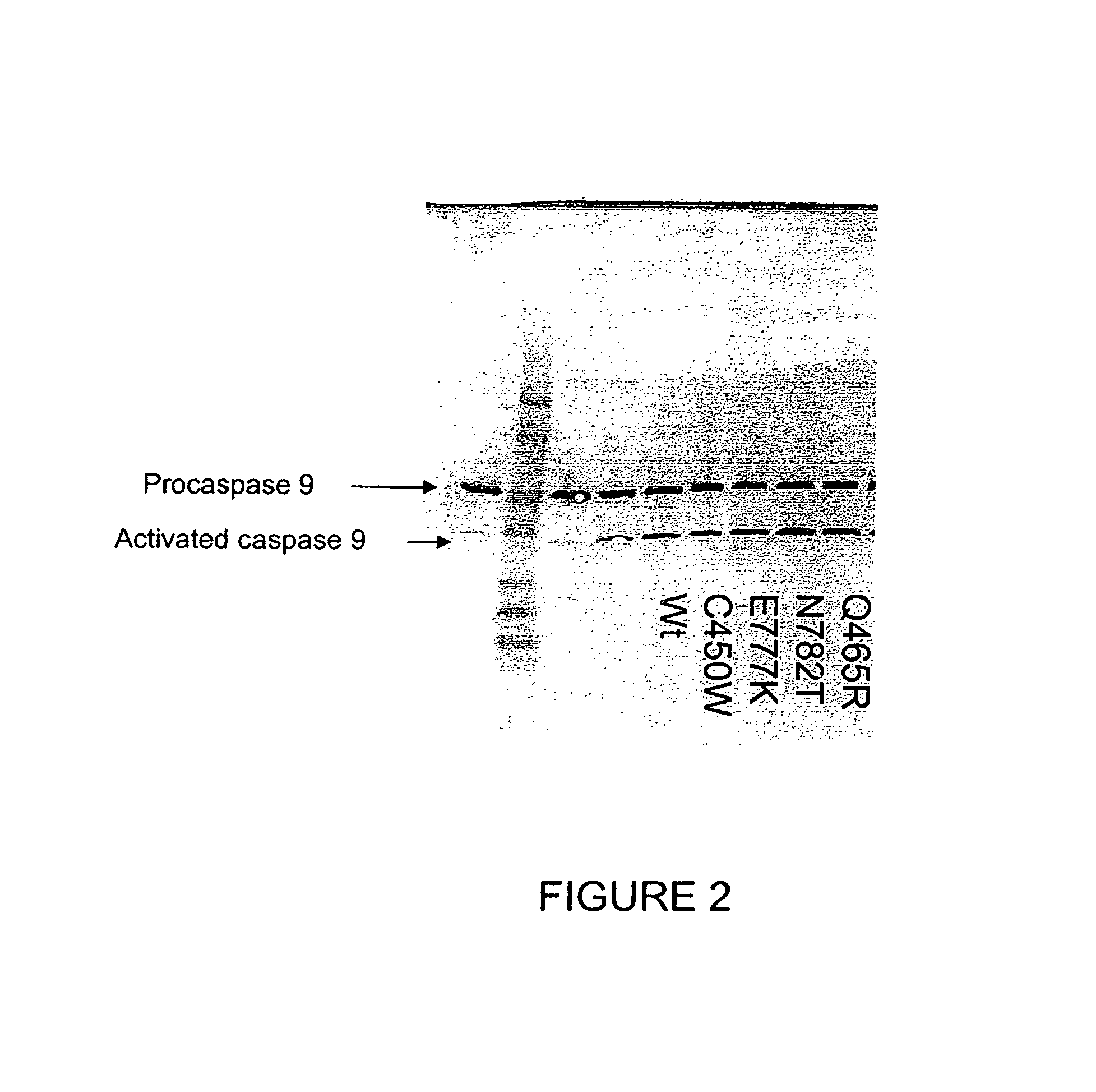Depression gene
a gene and depression technology, applied in the field of depression, can solve the problems of 30 billion dollars lost, 17% lifetime risk of suicide, and difficult to estimate the economic impact of depression, so as to reduce or prevent gene expression, prevent or treat depression, and improve disease symptoms
- Summary
- Abstract
- Description
- Claims
- Application Information
AI Technical Summary
Benefits of technology
Problems solved by technology
Method used
Image
Examples
example 1
Association of APAF1 and Depression
[0174]To investigate whether mutations in APAF1 are responsible for the linkage of depression to the chromosomal region 12q23-q24, we carried the analysis with the following parameters.
[0175]The phenotype used to assign affected individuals was males affected with either major depression or bipolar disorder. Females were considered uninformative, however this does not imply that the gene found only causes depression in males. Only that the male model was used to get the LOD score. The implication is that it is likely that the phenotype assignment is simpler in males. The model used in the analysis was an affected only model with a dominant mode of inheritance. The resource used to define this linkage was 84 Utah pedigrees with 1507 individuals, 254 of them are affected males. The highest LOD in the study score is 6.1 at marker D12S1706. The region is 7 cM which is about 6.5 million bases and contains approximately 20 genes. The linkage is observed ...
example 2
Segregating APAF1 Mutants are Capable of Activating Caspase-9 and Caspase-3 in an Apoptosome Reconstitution Assay
[0179]In order to test the affect of APAF1 mutants that segregate with major depression an apoptosome assay was utilized. Two methods were utilized to determine if the APAF1 segregating mutants were capable of reconstituting a functional apoptosome. First, procaspase-9 conversion to caspase-9 was assessed by SDS-PAGE analysis and western blot analysis using anti-caspase-9. Second, a caspase activation assay was used to determine if procaspase-9 was converted to caspase-9 by assaying for caspase activity.
[0180]The apoptosome reconstitution assay used in these studies was similar that of Zou et al. J. Biol. Chem., (1999), 274(17):11549-11556. The assay involved incubating purified cytochrome C, recombinant APAF1 or APAF1 mutants, recombinant procaspase-9, and dATP, in a buffer having 20 mM HEPES, 10 mM KCl, 2.5 mM MgCl2, 1 mM EDTA, 1 mM EGTA, 1 mM DTT, pH 7.5, at 30° C. Aft...
example 3
Primary Apoptosome Screen for Depression Therapeutics
[0182]This example relates to identifying compounds that have potential to therapeutically effect depression. The screen of this example can utilize an apoptosome assay. Several configurations of the apoptosome assay can be used to identify depression drug candidates. In one configuration an apoptosome reconstitution assay can be used to identify compounds that inhibit caspase activation. Wild-type APAF1 can be used in the apoptosome assay and compounds that reduce caspase activation as compared to control is identified as a potential depression therapeutic. Alternatively, mutant APAF1 (e.g., those discovered as a result of the invention) can be used in the apoptosome assay. The apoptosome having mutant APAF1 is expected to display increased caspase activation as compared to wild-type APAF1. Upon incubation of apoptosome having mutant APAF1, compounds that reduce caspase activation are considered to be potential depression therape...
PUM
 Login to View More
Login to View More Abstract
Description
Claims
Application Information
 Login to View More
Login to View More - R&D
- Intellectual Property
- Life Sciences
- Materials
- Tech Scout
- Unparalleled Data Quality
- Higher Quality Content
- 60% Fewer Hallucinations
Browse by: Latest US Patents, China's latest patents, Technical Efficacy Thesaurus, Application Domain, Technology Topic, Popular Technical Reports.
© 2025 PatSnap. All rights reserved.Legal|Privacy policy|Modern Slavery Act Transparency Statement|Sitemap|About US| Contact US: help@patsnap.com



